Re Ian Bremmer 'Could third-party candidates upend the 2024 US election?' 3 April The current political movement in the USA…
Cities and sustainability
Written by Diana Thebaud Nicholson // March 26, 2014 // Cities, Sustainable Development // 1 Comment
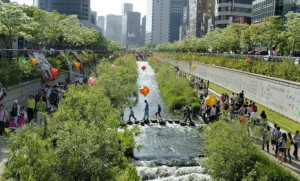 6 Freeway Removals That Changed Their Cities Forever
6 Freeway Removals That Changed Their Cities Forever
(Gizmodo) It seems counterintuitive, right? Rip out eight lanes of freeway through the middle of your metropolis and you’ll be rewarded with not only less traffic, but safer, more efficient cities? But it’s true, and it’s happening in places all over the world….
It turns out that when you take out a high-occupancy freeway it doesn’t turn the surface streets into the equivalent of the Autobahn. A theory called “induced demand” proves that if you make streets bigger, more people will use them. When you make them smaller, drivers discover and use other routes, and traffic turns out to be about the same. Don’t believe it? Check out these freeway removals in cities all over the world and see for yourself. Related: Five Cities Turning Ugly Overpasses Into Vibrant Parks
Freeway cap parks (or highway cap parks, or turnpike cap parks, depending on your preferred regional dialect and/or toll system) are the hot new way for cities to dial down the noise, pollution and blight that come with those pesky interstates. Facing rapidly growing populations as more people move back into urban areas, many cities across the country are looking at them as a way to quickly reclaim valuable public space.
14 March
How Design Can Help Build a ‘Transit Culture’
(The Atlantic) Earlier this month the transit agency serving metropolitan Rochester, New York, announced a million-dollar “rebranding” effort. That means everything from a new logo to new uniforms — all aimed at changing the public perception “that buses are only for people who have no other option,” the Democrat and Chronicle reports. The next brand will try to surround Rochester transit with a sense of comfort and ease.
Rochester isn’t alone in its desire for a transit brand. Jeff Doble, director of transportation design for the Vancouver office of architecture firm Perkins+Will, says system branding is becoming “more and more prominent and important to cities.” From the architectural design of stations to the wayfinding style of signage and maps, branding can help cities that are “trying to build a transit culture.”
“You realize how much a brand — whether it’s station design or just a refresh of signage within the city itself — really becomes part of the experience of the rider,” says Doble. “[Cities] are still struggling to get people to really appreciate the benefits of public transit. I think branding plays a big role in that.”
 La pollution à Paris en deux photos
La pollution à Paris en deux photos
(Le Monde) Il y a les chiffres précis, scientifiques. Vendredi, le pic de pollution a atteint un tel niveau en France que l’alerte aux PM10, à partir d’un seuil de 80 microgrammes de particules par mètre cube, a été déclenchée dans 18 départements. Parmi ceux-là, l’Ile-de-France, où les transports en commun sont gratuits, où la vitesse des véhicules est réduite, où les poids lourds sont détournés.
Et il y a le ressenti. Depuis quelques heures, la pollution est telle qu’elle en devient visible. Les habitants de la capitale peuvent en effet constater depuis vendredi matin la présence d’un voile sur les paysages de Paris. Afin de bien se rendre compte de cette réalité, Le Monde.fr a comparé deux clichés non retouchés de la tour Eiffel (fournis par l’AFP). Les deux images ont été prise du même point de vue à la même saison, l’une le 10 mars 2010, l’autre hier, 13 mars 2014. Pour les comparer, il suffit de faire glisser la fenêtre de la gauche vers la droite, et inversement.
9 March
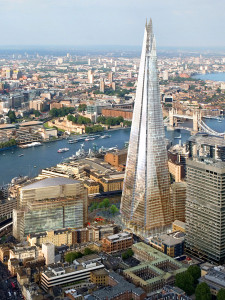 London, a city in thrall to money and greed
London, a city in thrall to money and greed
The rising tide of predictions about the future shape of the capital points towards the nightmarish consequences of a profoundly unequal city. One that is remodelled by the excesses of foreign wealth and the domination of the financial sector with its grossly swollen salaries, depleting the capital’s civic health.
(The Guardian) Inequality is booming in our capital. A debate about housing and the impact of the global super-rich is long overdue
London is desperate for change: for more affordable house building; the imposition of rent controls; the licensing of landlords; a mansion tax; increased council tax for empty properties (a 150% hike operates in Camden for those left empty for more than two years); a higher minimum wage and compulsory purchase orders, plus tougher planning regulations and restrictions on the proportion of overseas buyers per development.
London is desperate for change: for more affordable house building; the imposition of rent controls; the licensing of landlords; a mansion tax; increased council tax for empty properties (a 150% hike operates in Camden for those left empty for more than two years); a higher minimum wage and compulsory purchase orders, plus tougher planning regulations and restrictions on the proportion of overseas buyers per development.
Currently, the physical map of London is being transformed by projects such as the Shard; the Qatari-owned 72-floor skyscraper in Southwark. The maintenance of this luxury address falls to economic refugees bussed in from over-priced bed-sits two hours away, struggling on a minimum wage.
7 March
Ben Judah: London’s Laundry Business
London has changed. And the Shard — the Qatari-owned, 72-floor skyscraper above the grotty Southwark riverside — is a symbol of that change.
The Shard encapsulates the new hierarchy of the city. On the top floors, “ultra high net worth individuals” entertain escorts in luxury apartments. By day, on floors below, investment bankers trade incomprehensible derivatives.
Come nightfall, the elevators are full of African cleaners, paid next to nothing and treated as nonexistent. The acres of glass windows are scrubbed by Polish laborers, who sleep four to a room in bedsit slums. And near the Shard are the immigrants from Lithuania and Romania, who broke their backs on construction sites, but are now destitute and whiling away their hours along the banks of the Thames.
The Shard is London, a symbol of a city where oligarchs are celebrated and migrants are exploited but that pretends to be a multicultural utopia.
31 January
United Nations appoints former NYC Mayor Bloomberg cities, climate change envoy
(Reuters) – U.N. Secretary-General Ban Ki-moon on Friday appointed former New York City Mayor Michael Bloomberg as his special envoy for cities and climate change, in a bid to build momentum ahead of a planned U.N. conference in September.
Ban said Bloomberg will assist him in “consultations with mayors and related key stakeholders, in order to raise political will and mobilize action among cities as part of his long-term strategy to advance efforts on climate change.”
Ban is seeking to re-energize the global climate change debate and boost the United Nations’ role. The U.N. role for Bloomberg – a billionaire philanthropist who left office last month – was reported by Reuters on Thursday.
In a statement, Bloomberg said cities had emerged as a leading force in the battle against climate change. His appointment as U.N. special envoy is for two years.
… The United Nations will host a one-day climate change summit in New York on September 23, 2014. Many developing nations want it to be a deadline for rich countries to outline planned cuts in greenhouse gases beyond 2020 as a key step towards a global climate deal in 2015. Last month, Ban appointed former Ghana President John Kufuor and former Norwegian Prime Minister Jens Stoltenberg as special envoys on climate change to drum up support for the planned September conference.
2013
UN predicts near doubling of city dwellers by 2050
(AP) — The number of city dwellers is at an all-time high of about 3.5 billion and will nearly double in the next 30 to 40 years, with almost all the growth in developing countries, the head of the U.N. agency focusing on cities said Monday.
Currently, Clos said, the world is experiencing “the highest rate of urbanization in human history,” and national and local governments don’t have the capacity to address key issues including organization, governance, finance and the provision of services. … The challenge is whether the growth of cities can be done “in a planned and designed manner, in order to provide some basic services at affordable costs for the citizen,” he said.
20 November
The 10 Smartest Cities In North America
Which cities are doing the most to become the sustainable, connected, innovative city of the future?
(FastCompany) Today’s cities demand 21st century solutions to accommodate their growing populations in ways that not only maintain the quality of life, but also improve it. That’s where smart cities come in. Smart cities find ways to become more efficient, to deliver more services via mobile technology, to optimize existing infrastructure, and to leverage citizen participation to create better land-use decisions and to break down bureaucracy in order to stimulate a creative, entrepreneurial economy. In short, smart cities are innovative cities. Seattle in No.1 and Montreal is No.10
4 November
Jack Diamond and David Thompson*: The true costs of suburban sprawl
(Globe & Mail) Moving to the suburbs often means a need for a second car. Even economical cars cost about $10,000 a year to own. Other, less quantifiable costs include long commutes, increased emissions, higher risk of road accidents, fatigue and less home time.
In municipal terms, there are the increased infrastructural costs and their maintenance in comparison to more compact development. While trunk-line infrastructure and expressways are paid for by provincial governments, these costs are, of course, passed on to all taxpayers.
Recognizing these hidden costs is the first step to finding more economically, socially and environmentally effective housing.
Some municipalities have begun to gather data on the full costs of this form of residential development, and innovators across the country are beginning to look at policies meant to encourage more efficient, higher-density neighbourhoods.
* Jack Diamond is an architect and urban planner and a principal at Diamond Schmitt Architects in Toronto. David Thompson is policy director of sustainable communities for Sustainable Prosperity.
28 October
Challenge the Myth That Suburban Sprawl Is Cheaper, Says Ottawa Think Tank
New report exposes hidden costs; highlights innovative approaches to address sprawl
(Marketwired via Yahoo Finance) The sprawling outward expansion of Canadian cities to provide lower-priced houses to growing populations threatens the financial future of many Canadian local authorities and pushes unnecessary costs onto taxpayers. However, innovative municipalities that are addressing the problem may have lessons for the rest of the country, according to a new report released today.
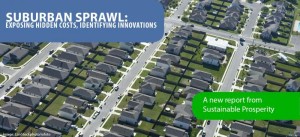 Hidden costs of sprawl will cripple cities, report says
Hidden costs of sprawl will cripple cities, report says
You can’t run a business without running the numbers, so why don’t cities count the long-term costs of suburbia, asks author of report on sprawl.
(Toronto Star) David Thompson is the author of a new report from Sustainable Prosperity, a University of Ottawa-based research network, that outlines the hidden costs of sprawl called, Suburban Sprawl: Exposing Hidden Costs, Identifying Innovations.
Planners and a growing number of politicians are now aware of the hidden costs of sprawl but the policies and the data they need to calculate the price of those developments hasn’t caught up, said Thompson.
His report recommends policies that don’t leave cities picking up the cost of roads, community centres, police and fire services that have to be operated and maintained long after the development charges against builders have been spent.
The way the system works now, people in existing neighbourhoods end up subsidizing developers who build new ones, said Thompson.
18 October
The 10 Most Polluted Cities in the World
Four of them are in Iran
(TIME) A day after the World Health Organization published a report linking air pollution to lung cancer, Quartz has put together a list of the most polluted cities in the world, based on data from the same organization. While the list originally came out this Spring, it’s an important reminder given the recent health news.
At the top? The city of Ahwaz, in Western Iran. With a population of more than three million, it is also the capital of the Khuzestan Province, which produces most of Iran’s oil. Like the other cities in the WHO’s top ten, it is a center of heavy industry. The others:
2. Ulaanbaatar, Mongolia
3. Sanandaj, Iran
4. Ludhiana, India
5. Quetta, Pakistan
6. Kermanshah, Iran
7. Peshawar, Pakistan
8. Gaborone, Botswana
9. Yasouj, Iran
10. Kanpur, India
5 October
The ‘smartest’ city in the world: Santander, Spain?
A network of 10,000 sensors across the city help locals to find empty parking spaces and the government to speed up urban repairs – and save everyone money.
(CSM) on the 19th century lampposts, on the sides of historic buildings, and buried underneath asphalt are thousands of sensors, 10,000 in all, that are attempting to catapult Santander far into the future – as the “smartest” city in the world.
Indeed, Santander is a city that today can tell drivers if there are available parking spaces on Gandara Street or whether they are better off turning left. It can measure moisture levels of soil and decide when a park needs to be irrigated. And it can regulate street lights from afar, dimming the luminosity if no passersby are near.
29 August
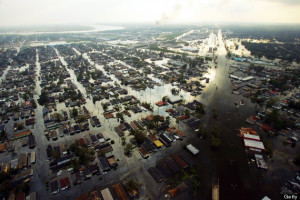 14 U.S. Cities That Could Disappear Over The Next Century, Thanks To Global Warming
14 U.S. Cities That Could Disappear Over The Next Century, Thanks To Global Warming
(HuffPost) There is really no way around it: Thanks to climate change, sea levels are rising. A huge question on the minds of many is, what does this mean for America? Will sea walls and city planning protect major metropolises, or are we bound to lose some national gems? Unfortunately, the latter is a significant possibility. Read on for 14 U.S. cities that could be devastated over the next century due to rising tides. (26 August)
Goodbye, Miami
By century’s end, rising sea levels will turn the nation’s urban fantasyland into an American Atlantis. But long before the city is completely underwater, chaos will begin
(Rollingstone) Sea-level rise is not a hypothetical disaster. It is a physical fact of life on a warming planet, the basic dynamics of which even a child can understand: Heat melts ice. Since the 1920s, the global average sea level has risen about nine inches, mostly from the thermal expansion of the ocean water. But thanks to our 200-year-long fossil-fuel binge, the great ice sheets in Greenland and Antarctica are starting to melt rapidly now, causing the rate of sea-level rise to grow exponentially. The latest research, including an assessment by the National Oceanic and Atmospheric Administration, suggests that sea level could rise more than six feet by the end of the century. James Hansen, the godfather of global-warming science, has argued that it could increase as high as 16 feet by then – and Wanless believes that it could continue rising a foot each decade after that. “With six feet of sea-level rise, South Florida is toast,” says Tom Gustafson, a former Florida speaker of the House and a climate-change-policy advocate. Even if we cut carbon pollution overnight, it won’t save us. Ohio State glaciologist Jason Box has said he believes we already have 70 feet of sea-level rise baked into the system. (20 June 2013)
UN Habitat
World Bank: Sustainable Development
The Economist: Liveability Ranking
and Overview August 2012
Canada has 3 of the world’s top 5 most liveable cities
According to an annual survey by the prestigious “Economist” magazine Intelligence Unit, the west coast port city of Vancouver ranks third in the world, out of 140 cities in the survey.
Toronto, Ontario, which is Canada’ biggest city, ranks 4th in the world followed by the prairie city of Calgary, Alberta, which actually tied for fifth spot with Adelaide Australia
For the third year in a row, Melbourne, Australia, took top spot, edging out Vienna Austria in second, and Vancouver which had occupied top spot for several years
18 August
Coastal cities to pay high price for climate change
Global flood damage could cost cities US$1 trillion per year, say researchers
Coastal cities in developing countries will be hardest hit
Policymakers need to take action and reduce risks in advance
(SciDev.net) According to the paper published today in Nature Climate Change, a “risk sensitive planning” strategy is needed to protect coastal cities, which are increasingly at risk because of climate change, subsidence and a growing population.
The researchers looked at the 136 largest coastal cities in the world and found that cities in developing countries are particularly vulnerable to flood losses as they often lack resources for long term planning.
“No city is doomed, but we have to expect huge disasters in the future. And better international coordination to provide support for the affected countries is really important,” says Stephane Hallegatte, senior economist at the Sustainable Development Network of the World Bank and lead author of the study.
26 June
(CBC) Calgary floods spotlight cities’ costly failure to plan for climate change
Municipalities not ready for rising number of severe weather events
Disaster risk management experts say the Alberta situation should serve as a wake-up call to municipalities across the country of the need to spend money and time mitigating the risks before disaster strikes, especially as climate change is predicted to bring bigger and more frequent severe weather events.
… Canada is currently the only G8 country where people cannot buy insurance for overland flooding. Private insurers cover sewage backup, but won’t offer flood protection because the small population base of Canada means it’s difficult for the companies to cover the cost of their risk. As a result, provincial and federal governments foot the bill for large-scale floods, meaning all taxpayers are on the hook.
“We all agree that there is a new reality now, which is climate change,” said Canadian Federation of Municipalities president Claude Dauphin. “Unfortunately, those that have to pay the bills are taxpayers or property owners.”
19 June
Ricardo Hausman: The Logic of the Informal Economy
The author links the informal economy to poor urban planning – and it makes sense.
(Project Syndicate) “The informal sector is mostly a consequence of the fact that people are disconnected from modern production networks – an inefficiency that will not be resolved simply by reducing the cost of registering a business or forcing small firms to pay taxes. What is required is a redesign of urban space, including subways and dedicated bus lanes, and a more integrated approach to housing, social services, and production areas. Governments will have to start doing some good things, not just stop doing some bad ones.”
14 June
Why Crowley has it wrong on cars, freedom, and public transit
(Broadbent Institute) In Wednesday’s Globe and Mail, Brian Lee Crowley of the MacDonald Laurier Institute produced what he called a “homage to the (undeservedly) hated car”. In it, he reproduced a number of standard shibboleths against what he sees as “the paternalistic philosophy of centralized urban planning that has infected city halls in virtually every major city in the country” determined to get people out of their cars.
At the heart of his claims is an argument that the development of low-density, car-dominated suburbs has been driven by an individual desire for more space, bigger houses, and the like. Consequently the support for public transport, cycling and pedestrian provision appear to Crowley as attempts at social engineering to make people do what they don’t really want to. … In most North American cities, urban development has been driven by the interests of the property developers. They bought up (and still do) large tracts of farmland around cities and towns, at low rural prices, lobbied heavily to get them zoned for residential construction, and realised enormous profits as they turned them into low-density suburbs. They have long been, and remain to this day, by far the principal financial contributors to municipal politicians’ electoral campaigns, and make sure that councils remain favourable to these interests.
12 June
New York lays out $20 billion plan to adapt to climate change
(Planet Ark) New York Mayor Michael Bloomberg on Tuesday announced a $20 billion plan to prepare for rising sea levels and hotter summers expected as a result of climate change in the coming decades.
The ambitious proposal – which could become the benchmark for other cities dealing with climate change – could reshape Lower Manhattan’s waterfront, with the possible addition of a “Seaport City” out of the East Side.
The more than 400-page plan, which follows widespread destruction wreaked by Superstorm Sandy last year, included about 250 recommendations ranging from new floodwalls and storm barriers to upgrades of power and telecommunications infrastructures.
The plan also contained prosaic ideas, such as building up beaches and using sand dunes and plantings as natural buffers to storm surges flooding.
While some smaller provisions of the complex, long-term plan are already underway, others would require approval or action from the state or federal government.
A report commissioned by the city and issued alongside the proposals found that over the next 40 years, the number of sweltering summer days could double or even triple, making New York City as hot by mid-century as Birmingham, Alabama, is now.
By then, the sea level surrounding New York City could also rise by 2 feet or more.
Bloomberg’s plan aims to ensure that the subway, transit, sewer and water, healthcare, energy and food distribution systems would continue to function for the city’s 8 million people well into the future.
2 June
Cities’ summit grapples with infrastructure as Ford snipes from sidelines
Civic leaders gathered in Vancouver at the annual meeting of the Federation of Canadian Municipalities this weekend, taking time to mark their progress on securing greater financial commitments from Ottawa to battle gridlock and to set new priorities.
A federal cabinet minister and two opposition party leaders, Thomas Mulcair and Justin Trudeau, beat a path to the get-together, addressing the group that boasts it represents 91 per cent of Canadians.
Canadian municipalities are facing serious challenges in the coming years to figure out how to pay for major transit projects and maintain some level of subsidized housing, says Calgary Mayor Naheed Nenshi – topics, he says, that dominated discussions with senior federal politicians and meetings of the big city mayors.
Affordable housing tops the agenda as mayors make plea to Ottawa for help (30 May)
Conference of The World in the City looks at “Empire, City, Nature” – May 30 to June 2, 2013
Thirty-six PhD students will present on urban themes in a broad spectrum of disciplines, along with senior urban researchers and scholars from Berlin, New York and Toronto. The three-day conference will run from May 30 to June 2 with the first day taking place at York University’s Keele campus and the following two days at the University of Toronto.
This year’s conference theme, “Empire, City, Nature”, is a direct reference to the life and work of geographer Neil Smith, who died on Sept. 28, 2012 at the age of 58. He was one of the most distinguished international scholars of human geography and related disciplines and his research centred on the themes of imperial expansion and urban redevelopment as well as nature, space and society.
19 May
Calgary: World’s Cleanest City
(HuffPost) … the City of Calgary has made great strides over the years in terms of sanitation and eco-initiatives, which are reflected in our sparking aqua rivers and litter-free streets.
The Too Good To Waste program, initiated in 2007 by the province, outlined ways to decrease the amount of waste sent to landfills. More commitment was given to recycling materials left over from Calgary’s housing boom, including wood, asphalt, drywall, shingles and concrete. Calgary has also made a commitment to divert 80 per cent of city waste away from landfills by 2020.
The Green Calgary website offers Calgarians advice on how to compost, pack a litterless lunch and what can go in a recycling bin. Additionally, Calgarians face steep fines for littering from cars and chucking cigarette butts on the ground – up to $1,000.
Calgary’s mayor, Naheed Nenshi, announced this week he would seek P3 funding from the federal government to finance a $133-million compost facility.
Calgary has consistently ranked in the top three of Mercer Global Financial and HR Consulting’s world’s cleanest cities for the past five years. The study is based on five factors: water availability and drinkability, waste removal, quality of sewage systems, air pollution and traffic congestion.
6 May
The Illusion of “Sustainability” in America
(The Motley Fool) In the following interview, we speak with Jeff Speck, author of Walkable City: How Downtown Can Save America, One Step at a Time. Speck is an architect and city planner in Washington, D.C., oversaw the Mayors’ Institute on City Design, and served on the Sustainability Task Force of the Department of Homeland Security.
The “sustainability” label gets applied to many things, from lifestyles to consumer goods. Does buying more green goods contribute to sustainability? Does living sustainably mean denying yourself and going without? Speck examines some of our conceptions and sets the record straight.
Moving Asian cities to public transport crucial, difficult – experts
COLOMBO, Sri Lanka (Thomson Reuters Foundation) – It is a mere distance of 10 km, but every day Kareema Silva keeps aside three long hours for the commute to work and back.
Silva’s problem is a common one in many Asian cities, where too many cars crowd limited roadways, and inefficient, limited or just unpleasant public transport systems offer little help.
A recent World Bank publication on city planning notes that traffic congestion is a worsening problem in many fast-growing Asian cities, and that easing it will require finding public transportation solutions that work well enough to lure drivers out of their cars.
2 April
A Slice of London So Exclusive Even the Owners Are Visitors
(NYT) An odd thing was happening, or rather not happening, as dusk fell the other day across Belgravia, home to some of the world’s most valuable real estate: almost no one seemed to be coming home. Perhaps half the windows were dark.
It seems that practically the only people who can afford to live there don’t actually want to. Last year, the real estate firm Savills found that at least 37 percent of people buying property in the most expensive neighborhoods of central London did not intend them to be primary residences.
31 March
In our view, sustainability also implies resilience in which architecture plays a vital role; the two recent stories below illustrate the good and the bad of attempting to blend new and old.
In Paris, Mixing the Contemporary With the Classics
(NYT) While many world capitals feed off the energy of modernity, Paris is loved because it represents an escape from it. So when most people visit the city, their agenda involves visiting monuments like the Louvre, the Hôtel de Ville and Notre Dame. The baby of the group is the Eiffel Tower, built in 1887.
But for lovers of contemporary architecture, Paris can be a surprisingly rich place. The latest crop of French architects is producing some of the best new work the city has seen. They are an eclectic group comfortable taking large risks while still melding the work into an august context. The buildings are a far cry from past examples of modern Paris design, like the clunky Tour Montparnasse, the badly dated Opéra Bastille and the cold skyscrapers of La Défense, the Modernist business district to the city’s west. These architects are producing treasures sprinkled amid the dense historic fabric. Often the contrast between old and new makes these buildings all the more striking. They are sleek diamonds in an aging rough.
Ministry of Culture
If you walk out of the Louvre and travel less than five minutes north, you can find a gem hidden in plain sight: the architect Francis Soler’s Ministry of Culture and Communication, which he completed about eight years ago. To unify a 19th-century classical building with a contemporary addition, he put a latticelike metallic screen (an abstraction of a Renaissance painting) over both. On a gray day, the covering disappears into the sky. On a bright day, it glows. The only public interior space is the ultramodern lobby, with lacy filaments hanging from the ceiling. It’s worth a visit, as the ministry offers free information about its cultural events here.
In contrast, A Tale of Two Londons (Vanity Fair, April 2013 edition) offers a grim picture of the rampant private development in London and the off-shore money that fuels the excesses. It is also a fascinating look at why London is the haven for so much questionably acquired wealth.
And to complete the picture of development excess, see the Forbes article on: The Most Expensive Billionaire Homes In The World (with slide show)
Billionaires have been trading multimillion-dollar real estate with tremendous zeal in recent years, slapping down record sums for trophy homes while quietly floating other properties in their portfolios through brokers in unofficial, off-market offerings. While the downturn paused activity in the super luxury end of the market, high net-worth buyers started fresh buying sprees in late 2010, trolling for high-end trophy property ‘bargains’ selling at markedly lower prices than their housing bubble heights or parking investment cash in prized pied-a-terres tucked inside the world’s most exclusive buildings. In fact, billionaire buying activity in the super luxury end of the world’s most expensive housing markets has been, according to a recent report from Savills, “so intense over the last seven years that it has led to a doubling of property values in this [super luxury housing] sector.”
22 March
The World’s Most Expensive Cities For Luxury Real Estate – Hong Kong, Tokyo, London, Paris, Moscow, New York …
22 January
New World Bank report offers policymakers roadmap for building resilient sustainable cities
(World Bank) Rapid urbanization can hold long-term economic, social and environmental promise for developing countries if investments made now in infrastructure, housing and public services are efficient and sustainable, the World Bank says in a new report “Planning, Connecting, and Financing Cities – Now: Priorities for City”.
“With many urban centers in the developing world still taking shape, we face an historic but narrow opportunity to build smart cities that encourage inclusive green growth and improve people’s lives,” said Zoubida Allaoua, Director of Urban and Disaster Risk Management at The World Bank. “But time is running out as the investments and policies put in place today will shape a city’s physical form and its carbon footprint for generations to come.”
In the next two decades, cities are expected to expand by another two billion residents, as people move in unprecedented numbers from rural areas to pursue hopes and aspirations in cities. More than 90 percent of this urban population growth is expected to occur in the developing world, where many cities are already struggling to provide basic needs such as water, electricity, transport, health services and education.
2012
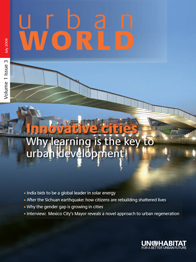 The 7 Fastest-Growing Cities in the World
The 7 Fastest-Growing Cities in the World
The end of suburbia
Sustainable Cities
Habitat for humanity
Urban World: Innovative cities: Why learning is the key to urban development
The Urban Vision profiles best practices and the finest thinking in the key components of city building –Urban Design, Architecture, infrastructure planning, policy strategies ….
(The Economist 2007)) A survey of cities: Thronged, creaking and filthy — Bursting cities, bust infrastructure
(World Bank) Cities and Flooding: A Guide to Integrated Urban Flood Risk Management for the 21st Century
Tianjin Eco-City In China: The Future Of Urban Development? (PICTURES)
More world megacities vulnerable to major floods
In coming years, the number of coastal megacities at risk of storm surges and flooding is expected to rise significantly. In terms of assets, the risks faced by low-lying cities such as Tokyo, New Orleans and Amsterdam are projected to be surpassed by the fast-growing metropolises of Calcutta, Shanghai, Mumbai, Bangkok and Ho Chi Minh City. “The landscape of vulnerability has changed spectacularly,” says Vinod Thomas of the Asian Development Bank. Yale Environment 360 (12/17)
10 December
Financial nerve centres at risk of flooding (PDF)
Cleo Paskal on the threat nature poses to world markets
(Chatham House) One increasingly glaring problem is that many global trade and financial centres, including Shanghai, Mumbai, Bangkok, London as well as New York, are in vulnerable locations. Each city is projected to be increasingly subject to extreme weather, throwing periodic wrenches into the global economy. Such disruptions can weaken economic systems, and have unexpected cascading effects, from shutting down trading floors, to rupturing critical supply chains.
Extreme weather is just one factor, however. Most financial centres grew up around ports which placed these cities on the coast – New York, Shanghai, Mumbai, Bangkok – or, like London, on a large river. Population booms then led to haphazard zoning and development.
The result is overstretched infrastructure papering over the cracks in an increasingly unstable environment. Buildings start subsiding, airports go up on floodplains, saltwater infiltrates underground wiring and transport systems. And the city – a critical hub in a global economy – becomes a disaster waiting to happen. In future there will be more Sandys hitting more global centres more often. And they will affect you. Here we look at five cities and the threat they face from just one disruption, flooding.
12 November
Municipal officials ask Ottawa to fix crumbling cities
(CTV) Canada’s aging municipal infrastructure is crumbling and municipal officials are looking for a promise of long-term investment from the federal government to address the problem.
The Federation of Canadian Municipalities will release a list of specific recommendations in Vancouver on Tuesday.
Traffic congestion alone is costing the country $10 billion a year in lost productivity, according to a group called the Municipal Infrastructure Forum, which includes the federation, the Canadian Chamber of Commerce and the City of Toronto.
… one in four city wastewater treatment plants needs major upgrades to meet new federal regulations, and one in four roads is transporting far more goods and people than it was designed to handle.
At the same time, extreme weather events like flooding, ice storms and freezing rain appear to be on the rise, putting more pressure on municipal systems. … The insurance industry in Canada is now paying out more than $1 billion a year in sewer back-up claims alone.
9 November
Economic geography — The landscape of decay and renewal
(The Economist) The great cities of the northeastern corridor boomed to their massive size during the industrial revolution. Between 1790 and 1860 the population of New York City (which, contrary to the implication of the Times piece, has been the behemoth of the Northeast for two centuries) rose by at least 50% per decade. New York, and the other industrial cities of the corridor, were built on a very straightforward economics. At the time, shipping by sea was cheap while shipping (or indeed traveling) over land was prohibitively expensive. Port cities therefore became factory cities. Raw materials were shipped into ports like New York, Philadelphia, and Baltimore, transformed by the local industry, and then shipped back out to destination markets. These industries provided direct employment for hundreds of thousands of workers, and fueled the growth of other sectors as well, from retail to finance and insurance.
But over the course of the 20th century, the pattern of transport costs that held this world together changed dramatically. Highways and the automobile allowed richer residents to move out of central jurisdictions to nearby suburbs. That robbed central places of an important source of tax revenue and led to declining public services, which encouraged still more suburbanisation. Highways, and new shipping technologies, also allowed manufacturers to escape the high real-estate and labour costs of port cities. Industry began to migrate to suburbs, then to the American South, and then abroad. For some time these trends seemed to spell doom for the Northeastern cities. But in fact, they created a different sort of economic gravity, which has in turn led to renewed growth across the region.
Ultra-modern Malaysian city a template for region
Plans by the Malaysian government to build a “smart metropolis” that incorporates the latest advances in environmentally friendly technology would accommodate some 3 million inhabitants by 2025, serving as a model for a region in which urban dwellers outnumber all others. More than a third of the financing for the $30 billion price tag for the city, Iskandar Malaysia, will come from outside the country. The Guardian (London) (11/2)
13 September
Canadian Municipalities: State of the infrastructure
(RCInet) The Federation of Canadian Municipalities has released its first ever nation-wide survey of the state of infrastructure in towns and cities across Canada
It’s being called a “report card” and it rates four specific areas, road, water supply, waste water networks, and storm sewer systems.
The report indicates that much of the infrastructure in Canadian cities is over 20 years old, in some cases major systems are up to 70 years old.
Municipalities were asked to grade their infrastructure by degrees ranging from “very good” to “very poor”. It was also noted that it would take billions of dollars to carry out sorely needed improvements and upgrades.
Federation of Canadian Municipalities Report Card Highlights
13 August
Postcards from the Future
(Foreign Policy) Welcome to the era of the megacity. More than half the global population now lives in urban areas, and there’s no going back to the farm. With China leading the way, today’s global cities are surging ahead in population and economic heft, powering the world economy — and posing some very difficult problems for governments. But it’s not all about the Beijings, the New Yorks, and Tokyos. Drawn from the McKinsey Global Institute’s index of the world’s 75 Most Dynamic Cities, some of these up-and-coming commercial hubs — including Belo Horizonte, Fuzhou, and even Philadelphia — may surprise you.
31 May
Academic elites migrate to ‘green cities’ in increasing numbers
(CSM) Recent studies suggest a divergence is occurring in average human capital levels across US cities, a path dependence story that college graduates want to live and work near others like them while also creating so-called “green” high amenity cities.
23 May
Green Roofs in Big Cities Bring Relief From Above
(NYT) It’s spring — time to plant your roof. Roofs, like coffee, used to be black tar. Now both have gone gourmet: for roofs, the choices are white, green, blue and solar-panel black.
All are green in one sense. In different ways, each helps to solve serious environmental problems. One issue is air pollution, which needs no introduction. The second is the urban heat island.
20 April
The building that’s beyond green
(Globe & Mail) It’s the leader in a new generation of green construction – buildings that will do much more than just reduce harm to the environment.
Instead, say the passionate advocates who built the Centre for Interactive Research on Sustainability at the University of British Columbia, it will show how buildings can enhance the planet’s health, along with the health and happiness of humans who work in them.
UN: Urban growth must be more sustainable
Over the next 40 years, urban populations are forecast to explode in India, China, Nigeria, Indonesia and the U.S., according to the United Nations. “Cities are where the pressures of migration, globalization, economic development, social inequality, environmental pollution and climate change are most directly felt,” per a UN statement, which urged negotiators to hammer out plans for more sustainable cities at the upcoming Rio+20 summit. Reuters (4/5)
22 March
Intelligent urban design
Cities should be places where the best and the brightest congregate and where new wealth is created.
(Al Jazeera) The goal is not perfection in a single city, but more effective innovation and competition, so that the best cities prosper and other cities emulate them. There are enough mobile people that one city’s success won’t harm others; on the contrary, it is more likely to encourage existing cities to change, just as new market entrants force incumbents to improve. Sometimes, in order for evolution to do its best work, the individual components need some intelligent design.
18 March
Chinese move to their eco-city of the future
The Sino-Singapore Tianjin Eco City – the world’s largest eco-city – is not a green, carbon-free paradise where cars are banned from the streets.
Instead, as its first residents moved in this month, they found it is remarkably like most other Chinese cities: shrouded in smog and depressingly grey.
But then the Sino-Singapore Tianjin Eco City, just over an hour from Beijing by train, is not supposed to be a whizzy vision of the future.
It is far more practical – a model for how Chinese cities could develop and solve some of the enormous problems facing them: permanent gridlock, a lack of water and ruinous electricity bills.
If a few of the small changes adopted in Tianjin were rolled out nationwide, the results could dramatically change China’s devastating impact on the environment.
Guide helps cities cope with surge in urban flooding
A new World Bank manual offers practical guidance to governments on how to better manage flood risk in light of trends in rapid urbanization, surging populations and climate change. Structural measures such as drainage channels and wetlands, as well as nonstructural measures such as flood warning systems and insurance schemes, are increasingly necessary because aid agencies are ill-equipped to deal with urban disasters. AlertNet (2/13)
12 March
Floating City Rises Above It All To Green Future
Not only does this thing support mountains, rivers, lakes, forests and animals (yes), forming “a utopia wonderland residing in the air,” it does so via magnetic levitation (Maglev) technology, which works by repelling the Earth’s magnetic field. This is, essentially, a giant, floating hovercraft, controlled by large number of molecular magnets distributed along the underside of the vessel. Apparently, the rotation of the curved bottom can generate all of the power necessary for the city, and also maintain its balance (probably pretty important, since the thing was designed to support mountains).
Can China’s growth be greener?
Experts realize they cannot constrain the growth of cities in China, an urbanization boom that is not only unprecedented for the world, but especially harmful to the environment. Experts and foreign conservation groups are trying to get China’s construction industry to use principles of green design and smart growth to steer future development. Yale Environment 360 (2/13)
2011
26 October
George Monbiot: Atro-city
For at least a century, governments have tried to urbanise their nations. Communist states sought to drag people out of what Marx and Engels called their “rural idiocy”. Capitalist governments – Mahatir Mohammed’s administration in Malaysia is a good example – tried to persuade and bully indigenous people into leaving the land (which then became available for exploitation) and move to the cities to join the consumer economy. Urbanisation was equated with progress and modernity.
In countries such as Australia, the US, Canada, Spain and Italy, weak planning has ensured that the distinction between town and countryside is blurred. Here you can find the worst of both worlds: a wildly unsustainable, disaggregated urban nightmare, in which infrastructure is stretched across sprawling suburbs, people have no choice but to drive, and anonymous dormitory estates seem perfectly designed to generate alienation and anomie.
Sydney is not as bad in this respect as Brisbane, Perth and Adelaide, whose sprawl and low urban densities beggar belief, but the problems it now faces are the result of catastrophic planning failures. Without policies to keep cities compact and urban densities high, they will begin to fail all over the world: logistically, socially and economically. Remember that, whenever anyone argues that we should weaken the planning laws to stimulate the economy.
1 June
Technology ‘can reduce problems of urbanisation’
(SciDevNet) Growing urbanisation does not have to spell disaster for either human health or the environment, and both research and underused technologies can help mitigate its negative effects, a conference has heard.
Developing nations must accept that urbanisation is inevitable, and invest in research and infrastructure to support their growing populations. See also How urban societies can adapt to resource shortage and climate change
11 May
Singapore, Stockholm and Seoul top-ranked in Ericsson’s Networked Society City Index
(Reuters) The Networked Society City Index – established through a joint study conducted by Ericsson (NASDAQ:ERIC) and management consultancy Arthur D. Little and presented on May 10 at Ericsson’s Business Innovation Forum in Silicon Valley in the US – shows that cities with a high level of ICT maturity are better able to manage issues such as environmental management, infrastructure, public security, health-care quality and education. [The other top-10] are: London, Paris, New York, Tokyo, Los Angeles, Shanghai and Beijing.
8 March
Set cities free, and connect them
Investments in corridors on which there is falling transportation demand or on which improvements don’t pass reasonable cost-benefit tests should be opposed, and should be targeted through efforts to reform funding rules. But on other corridors, I think it’s mistaken to worry too much about what, precisely, is the “right” distribution of population. Let me say again that I strongly support the reduction of limits on growth in cities. But it’s also worth pointing out that some of the pressure of rising demand for the biggest cities may be due to insufficient investment in infrastructure. It could be that firms which would ideally locate in Philadelphia but which have some business in New York have been increasingly likely to locate in New York thanks to soaring congestion on many of the northeast corridor’s transport lines. Reasonable access to New York’s market may have simply become too limited for may of those outside the city itself. Better links between the two cities might allow some firms and people to relocate to better locations, thereby freeing space in New York for firms that really can’t operate successful outside of that city.
4 March
All countries with passenger trains also have highways The Economist takes George Will to task for his assertion that people who like trains hate individualism and freedom.
The final point is that American car owners are not, in this century, individualistic in their driving or car-owning behaviour. Indian and Israeli car owners are individualistic in their driving behaviour. And there was a period when many Americans were individualistic in their car-owning behaviour. It looked like this:

But the people who owned cars in that fashion probably don’t share George Will’s political predilections, and may even be train-loving socialists.
China needs major push on water pollution
It will require billions of dollars and a concentrated policy to address China’s massive water problems, according to water activists. Updating the country’s urban water supplies alone would cost $20 billion a year. Rapid urban growth, fertilizers use, factory pollution and lax environmental protection enforcement, says environmentalists, are the main driving factors behind water pollution. Reuters (2/15)
8 February
David Brooks: The Splendor of Cities
… in his terrific new book, “Triumph of the City” [Edward] Glaeser points out that far from withering in the age of instant global information flows, cities have only become more important.
That’s because humans communicate best when they are physically brought together. Two University of Michigan researchers brought groups of people together face to face and asked them to play a difficult cooperation game. Then they organized other groups and had them communicate electronically. The face-to-face groups thrived. The electronic groups fractured and struggled.
Cities magnify people’s strengths, Glaeser argues, because ideas spread more easily in dense environments. If you want to compete in a global marketplace it really helps to be near a downtown. Companies that are near the geographic center of their industry are more productive. Year by year, workers in cities see their wages grow faster than workers outside of cities because their skills grow faster. Inventors disproportionately cite ideas from others who live physically close to them.
5 February
Naheed Nenshi’s challenge: Making Calgary a livable city
(Globe & Mail) Seldom has a Canadian mayor come to office with such a deep understanding of urban issues.
In a 2002 report called Building Up: Making Canada’s Cities Magnets for Talent and Engines of Development, he argued that the successful city of the future will be a place in which “people live where they work and play. Density is high. Public transit is a preferred choice. Young people can afford to live downtown. Classes and socio-economic backgrounds are mixed…”
14 January
China to create largest mega city in the world with 42 million people
China is planning to create the world’s biggest mega city by merging nine cities to create a metropolis twice the size of Wales with a population of 42 million.
City planners in south China have laid out an ambitious plan to merge together the nine cities that lie around the Pearl River Delta.
The “Turn The Pearl River Delta Into One” scheme will create a 16,000 sq mile urban area that is 26 times larger geographically than Greater London, or twice the size of Wales.
The new mega-city will cover a large part of China’s manufacturing heartland, stretching from Guangzhou to Shenzhen and including Foshan, Dongguan, Zhongshan, Zhuhai, Jiangmen, Huizhou and Zhaoqing. Together, they account for nearly a tenth of the Chinese economy.
14 January
Economist debates: The motion — This house believes that restricting the growth of cities will improve quality of life.
Defending the motion:
Paul James, Director, Global Cities Institute, RMIT and Director, UN Global Compact, Cities Programme
It is not metropolitan living, suburbanisation, or even the human shift to the predominance of city over rural dwelling that are the principal problems per se. It is rather the kind of cities that we tend to create: sprawling and bloating.
Against the motion:
Chetan Vaidya, Director, National Institute of Urban Affairs, India
Rather than restricting city growth, urban strategy should focus on harnessing the benefits of urban growth by managing it well, ensuring improved and equitable service provision and promoting good governance.
2010
29 December
The 10 Cleanest Cities
Cities are not exactly synonymous with cleanliness; so how to determine which are the closest to that ideal?
(CNBC.com) Each year, the consulting, outsourcing and investment firm Mercer ranks cities worldwide in its Quality of Living Survey . The 2010 survey crunched data from 221 cities. Drawing from this data, Mercer also compiles an eco-ranking of the cities, taking into account water availability and drinkability, waste removal, sewage systems, air pollution and traffic congestion. Coming in at the bottom of that list were Muscat, Oman; Point-a-Pitre, Guadeloupe; and worst of all were Nagoya and Osaka in Japan, and Frankfurt, Germany in a three-way tie for last. Click to see the ten cities that get it right.
28 October
Cities Under Pressure To Balance Trees And Skyscrapers
(Reuters/Planet Ark) The fight against the destruction of nature can start in cities, even as urban centers around the world face the challenge of accommodating more people, skyscrapers and transport systems.
While green groups at a U.N. environment meeting in Japan focused on the need to save rainforests and oceans, mayors at the talks said conserving nature in cities was equally vital.
Massive water project alters Chinese landscape
Chinese authorities have undertaken a massive $62 billion water-diversion project to divert supply from China’s southern flood plains and western mountains in to water-stressed Beijing. Engineers will create an unprecedented network of canals, aqueducts and tunnels to carry the water supply. Chinese conservationists have expressed serious concerns over the project’s effects on plant and animal life, and potential damage to archaeological sites. Los Angeles Times (9/29)
26 September
In Arabian Desert, a Sustainable City Rises
By this past week, as people began moving into the first section of the project to be completed — a 3 ½-acre zone surrounding a sustainability-oriented research institute — it was clear that Masdar is something more daring and more noxious.
Norman Foster, the firm’s principal partner, has blended high-tech design and ancient construction practices into an intriguing model for a sustainable community, in a country whose oil money allows it to build almost anything, even as pressure grows to prepare for the day the wells run dry. And he has worked in an alluring social vision, in which local tradition and the drive toward modernization are no longer in conflict — a vision that, at first glance, seems to brim with hope.
17 September
North American municipalities take climate change actions through innovative energy projects
Significant progress on energy efficiency, economic savings and decisive actions against climate change are revealed through the experiences and lessons of thirteen municipalities across Canada, Mexico and the United States in a new study, Best Energy Management Practices in 13 North American Municipalities from the Commission for Environmental Cooperation (CEC).
China and India: A tale of 2 megacity styles
China and India are urbanizing at an extremely rapid clip. By 2030, China is expected to have 221 cities with a population of 1 million or more, while India is expected to add 215 million city dwellers over the same period. The two population centers are confronting urbanization in dramatically different ways, according to this analysis in Foreign Policy. Foreign Policy (Sept./Oct.)
11 August
Metropolis Now: The Global Cities Index 2010
(Foreign Policy) We are at a global inflection point. Half the world’s population is now urban — and half the world’s most global cities are Asian. The 2010 Global Cities Index, a collaboration between Foreign Policy, management consulting firm A.T. Kearney, and The Chicago Council on Global Affairs, reveals a snapshot of this pivotal moment. In 2010, five of the world’s 10 most global cities are in Asia and the Pacific: Tokyo, Hong Kong, Singapore, Sydney, and Seoul. Three — New York, Chicago, and Los Angeles — are American cities. Only two, London and Paris, are European. And there’s no question which way the momentum is headed: Just as more people will continue to migrate from farms to cities, more global clout will move from West to East.
14 July
Another Side of Shanghai
Modern Shanghai is a city of contrasts. The view we see most often in news photos is the ultra-modern side of Shanghai, with fancy Shanghai Expo pavilions, giant shopping malls, and the vast new Apple store that opened on July 10. But another aspect of Shanghai exists too, although it is quickly being cleared away: old buildings, poorer residents, and reminders of the city’s less telegenic past.
1 July
Asia’s alarming cities
How Asian cities are built will determine the prospects for global carbon emissions. Oh dear
(The Economist/Banyan) IF YOU are the sort to worry at night about man-induced climate change, then book a stay at any of the new high-rise hotels going up on the edge of China’s big cities—start looking for them around the third ring road. When you stagger red-eyed out of bed to peer into the murky dawn, you will see rank upon serried rank of raw “superblock” developments, a mile apart, marching into the distance. You think of the emissions involved in their carbon-hungry construction, the traffic jams on the arteries tying them into the expanding city, and the new coal-fired power stations being built to light them up. And you wonder how Asia can change its habits—energy consumption grew by 70% in the ten years to 2008—before it is too late for all of us.
Yet the world’s hopes of putting carbon emissions on a manageable path depend upon on how developing Asia urbanises in the coming decades. The scale is staggering. According to the Asian Development Bank, 44m people join city populations each year. Every day sees the construction of 20,000 new dwellings and 250km (160 miles) of new roads.
7 May
Megacities of the world: a glimpse of how we’ll live tomorrow
(CSM) By 2050, 7 out of 10 people will live in megacities, offering the benefits of concentrated living but also some of the biggest public-works challenges in human history.
Sometime in 2007, for the first time in human history, more people began to live within the cacophonous swirl of cities than in rural hamlets or on countryside farms.
It’s a fundamental shift that may be altering the very fabric of human life, from the intimate, intricate structures of individual families to the massive, far-flung infrastructures of human civilizations.
Singapore’s gamble – The city-state’s new casino cost a fortune but looks well-timed
For Singapore, the immediate opportunity is to give the many business people who visit a reason to stay for the weekend rather than leave as soon as their work is done. Thanks to rising Asian wealth, the region’s tourism industry has excellent growth prospects. Because leisure businesses are so labour-intensive, however, Singapore will need to import large numbers of foreign workers as it expands its tourism trade. Immigration is already a touchy issue among Singaporeans: having increased the population substantially in recent years, the government is now planning on boosting it further, from 4.5m to 6m. To assuage public fears about being swamped, it is seeking to attract mainly high-earners while turning away low-wage immigrants. But its tourist attractions and hotels will need lots of cleaners and waiters, and there aren’t enough Singaporeans to fill such jobs.
14 – 16 April 2010 The Sustainable City 2010 – Sixth International Conference on Urban Regeneration and Sustainability
Yemen’s water woes are a long-term crisis
The threat of terrorist networks exploiting Yemen’s instability is less of a domestic concern than the threats the country facing from a dwindling water supply. Yemen’s population is growing rapidly, and nature is already not producing enough groundwater to meet needs. San’a may be on track to become the first capital city in the world to run out of water. AlertNet.org/Reuters (2/17)
5 December 2009
Bloomberg Drops an Effort to Cut Building Energy Use
After intense opposition from building owners, Mayor Michael R. Bloomberg has dropped the most far-reaching initiative of his plan for reducing greenhouse gas emissions.
The plan, which the owners said was too costly, called for all buildings of 50,000 square feet or more to undergo audits to determine which renovations would make them more energy efficient, and for owners to then pay for many of those changes.
1 December
Singapore Highlights Role Of ASEAN Engineers In Sustainable Development
As many of the cities in Southeast Asia continue to grow and experience rapid urbanization, engineering projects will become more complex in the future These cities will require deeper underground works, higher structures, more complex and larger scale infrastructure works for transportation, sanitation, and energy supply. This is particularly so for land-scarce Singapore.
Consequently, engineers have to innovate and adapt to our changing needs. For example, the buildings in Singapore and also in many parts of the world have grown from simple functional buildings to “smart” buildings which are integrated with IT systems. The latest evolution is towards “Green” Buildings” – buildings that are environmentally sustainable and energy efficient. I believe that engineers will play an instrumental role in the development of green building technology.
Leading world experts to re-envision Urban India
India’s 300 million city dwellers make up about one-tenth of the world’s urban population. Today, many Indian cities are growing so rapidly that even as the census gets completed it is already way out of date. The speed and nature of growth in cities in recent times and the magnitude of its environmental consequence is unprecedented by history.
5 October
World Habitat Day 2009
25 September
10 Global Cities & Their Greenhouse Gas Emissions
A new report ranks ten leading world cities on their greenhouse gas emissions. It also examines how and why the emissions differ.
As the report says, over 50% of the world’s population lives in urban areas. Leading cities of the world, global cities, are the places where greenhouse gas emissions really need to be cut. The greenest city from the study is Barcelona and the worst is Denver. The study examined a host of factors — “geophysical factors (climate, access to resources, and gateway status) and technical factors (power generation, urban design, and waste processing)” — in order to determine the total GHG emissions for each city.
World’s cities move to restore waterways, environment
Cities around the world increasingly are moving to restore rivers and streams and create green corridors around them by dismantling pavement previously put in place to promote economic development and cope with traffic. Restoration of the Cheonggyecheon in Seoul, South Korea, four years ago has led to massive increases in the presence of fish, bird and insect species, and cut air pollution and area temperatures. The New York Times (7/16)
26 March 2009
Cities Deal With a Surge in Shantytowns
While encampments and street living have always been a part of the landscape in big cities like Los Angeles and New York, these new tent cities have taken root — or grown from smaller enclaves of the homeless as more people lose jobs and housing — in such disparate places as Nashville, Olympia, Wash., and St. Petersburg, Fla.
6 November 2008
Cities and growth
The problems—and benefits—of urbanisation on a vast scale
the world’s urban population has risen from 1.6 billion to 3.3 billion, and over the next 30 years cities in the developing world are set to grow by an extra 2 billion. But many governments have become doubtful of their ability to cope with urbanisation on such an enormous scale; some have concluded that they ought to slow the process down in order to minimise social upheaval. This view owes as much to anti-urban bias as it does to sober analysis.
In 2005, more than half the poor countries surveyed by the UN Population Division said they wanted to reduce internal migration to rein in urban growth. The food crisis of the past 18 months has sharpened worries about how to feed the teeming slums. This week the UN’s secretary-general, Ban Ki-moon, warned the biennial World Urban Forum meeting in Nanjing that 2 billion could be living in slums in the year 2030 and that “urban areas consume most of the world’s energy and are generating the bulk of our waste.”
6 October
Shanghai highrises could worsen threat of rising seas
SHANGHAI (Reuters) – Shanghai, China’s most populous city and an aspiring global financial center, is also among the world’s most vulnerable urban areas to a rise in sea levels as global warming melts polar ice.
29 September
Cities ‘contribute less’ to global emissions
(SciDev Net) [LONDON] Cities contribute much less to greenhouse gas (GHG) emissions than assumed, particularly in poorer countries, according to a researcher.
Publishing his work in Environment and Urbanization last week (26 September), David Satterthwaite, a senior fellow in human settlements at the UK-based International Institute of Environment and Development, says estimations of the GHG emissions of cities are exaggerated.
30 August
London Mayor Unveils Climate Crisis Plan
(Reuters/Planet Ark) LONDON – Mayor Boris Johnson unveiled a plan on Friday to help London tackle the challenge of climate change with less carbon dioxide, more trees, better drainage and increased water efficiency.
Some 15 percent of London is deemed at high risk from flooding due to global warming — an area including 1.25 million people, 480,000 properties, 441 schools, 75 underground and rail stations, 10 hospitals and one airport.
At stake is an estimated 160 billion pounds (US$293 billion) worth of assets, not just in London and its vital financial district, but all along the banks of the Thames estuary where vast new housing developments are being planned
Climate Resilient Cities
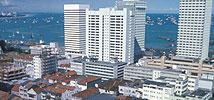
6 August 2008
UN-World Bank report helps coastal cities cope with climate change
Large cities located near waterways and thus exposed to water-related climate hazards have a new weapon in their arsenals, thanks to the United Nations and World Bank, which jointly produced a report aimed at helping cities decrease their vulnerabilities. Mumbai, Tokyo, New York and Shanghai are among the cities most at risk, according to the report.
A How-To Manual for Large Cities to Build Climate Resilience
(ENS) The world’s urban centers—many are coastal—are increasingly exposed to rising sea levels and other consequences of climate change. These changes threaten the property and the lives of billions of urban citizens. Damage inflicted could even undermine the world’s economic gains of the past few decades, experts warn.
3 May 2007
Metropolis strives to meet its thirst
 The Australian of the year 2007, environmentalist Tim Flannery, once predicted that Perth in Western Australia could become the world’s first ghost metropolis, its population forced to abandon the city due to lack of water.
The Australian of the year 2007, environmentalist Tim Flannery, once predicted that Perth in Western Australia could become the world’s first ghost metropolis, its population forced to abandon the city due to lack of water.
While some critics scoffed at this idea, there is no doubt that it has forced the city to wake up to the fact its water is running out and that it can no longer rely on its natural supply.
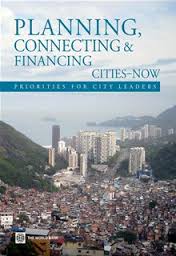

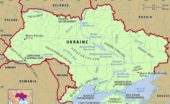


One Comment on "Cities and sustainability"
Re 6 Freeway removals:
Great stories. Covering the rest of the Ville Marie Expressway would do wonders for that area of the city, if we could find a way to pay for it. In a more modest example, the demolition of the former Pine/Park Avenue overpass monstrosity and it’s replacement by a grade-level interchange and extension of Parc Jeanne-Mance has improved the McGill/Plateau neighborhood and I haven’t noticed any more difficulty when driving through.